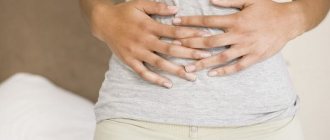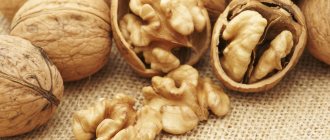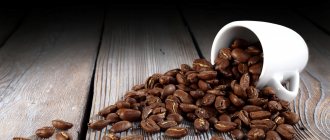Heartburn in children can occur at any age, but a characteristic sign is that for children under 3 years of age, such a symptom is atypical, but for older children, as well as for adults, it is considered quite normal.
- Etiology
- Symptoms
- Diagnostics
- Treatment
- Complications
- Prevention
In most cases, the cause of heartburn is new foods that are gradually introduced into the child’s diet. But in some situations, such a symptom may indicate the occurrence of some pathology associated with the organs of the digestive system.
The main signs that may accompany this manifestation in younger children are moodiness, severe crying, sleep disturbances, frequent regurgitation, and refusal to eat. A child over three years old may complain of a burning sensation in the chest, unpleasant belching, abdominal pain due to bloating, and nausea.
It is possible to determine why a child has heartburn using complex laboratory and instrumental diagnostics. Elimination of this symptom is carried out using conservative methods of therapy, in particular taking medications, following a gentle diet and using traditional medicine.
Causes
Heartburn in children is usually a sign of acid reflux, during which acid from the stomach flows back into the esophagus.
At the bottom of the esophagus there is a muscle - the lower esophageal sphincter - that keeps acid in the stomach. But if the sphincter relaxes too much, stomach acids can rise up and irritate the thin lining of the esophagus. This causes heartburn and other symptoms. Acid reflux is an uncomfortable but very common condition in babies. Occurs in about half of all children under 4 months. In infants, immaturity of the digestive tract is a factor causing heartburn.
In older children, from 5 years old, acid reflux, which causes heartburn, may occur due to the following reasons:
- incomplete closure of the esophageal sphincter;
- certain foods and drinks - chocolate, mint, fatty, fried foods, coffee, sugar, carbonated drinks. After the onset of heartburn, reflux of gastric juice sometimes causes sensitivity of the esophagus to other foods - tomatoes, citrus fruits, spicy foods, onions, garlic. Consumption of these products subsequently leads to increased heartburn.;
- improper diet - overeating, eating immediately before bedtime;
- pressure on the stomach caused by obesity, frequent bending and lifting, tight clothing, excessive physical activity;
- in adolescents - smoking and use of other tobacco products;
- medications - Aspirin, Prednisolone, Ibuprofen, potassium, iron supplements, antihistamines and sleeping pills;
- diaphragmatic hernia. A condition in which some abdominal organs protrude through the diaphragm (the muscle that separates the lungs from the abdominal organs) into the chest;
- stress, which increases the amount of acid and slows down the emptying of the stomach.
Etiology
There are quite a few predisposing factors to the development of heartburn in a child, so they are usually divided into two large groups, namely pathological and physiological. The first group of reasons includes:
- gastritis of any etiology;
- inflammation of the esophageal mucosa;
- GERD;
- disruption of the functioning of the esophageal sphincter, which may be associated with increased pressure in the peritoneum, stretching of the valve or muscle weakness;
- hiatal hernia;
- peptic ulcer of the duodenum or stomach;
- congenital anomalies of the structure of the digestive system;
- cystic fibrosis;
- diseases of the ENT organs;
- rachiocampsis;
- nervous system disorders.
The second group of predisposing factors consists of:
- excessively rapid growth of the child;
- prolonged exposure to stressful situations;
- the child is overweight;
- too much physical activity;
- taking certain medications;
- poor nutrition that does not correspond to the child’s age group.
Predisposing factors to the development of heartburn in a child
Whatever the factors in the formation of heartburn in a child, at its first manifestation it is necessary to seek help from a doctor.
Diagnostics
At times, it is difficult to clearly diagnose heartburn in young children because they cannot clearly identify their symptoms. At most, a small child will say that his stomach hurts in the upper part.
If your child is showing any symptoms of heartburn or acid reflux, start by visiting your pediatrician. You can contact a gastroenterology specialist. Testing for heartburn caused by acid reflux will depend on the child's age.
- X-ray of the intestines with barium. After the child drinks a chalky liquid containing contrast material (barium), an X-ray of the esophagus, stomach and part of the intestines will be taken;
- endoscopy. With the child under general anesthesia, a small flexible tube with a camera (endoscope) is inserted through the mouth into the esophagus and stomach. This will allow the doctor to look at these areas and take a tissue sample (biopsy) if necessary;
- esophageal pH probe. The doctor inserts a thin, flexible tube through the child's nose and into the esophagus to check the level of acid in the esophagus;
- study of the work of peristalsis. After the child drinks milk containing a specific radioactive material, the doctor uses a camera to monitor the movement of the substance through the digestive tract.
Symptoms
The clinical manifestation of heartburn will differ depending on the age group of the child. Thus, parents of children under three years old should pay attention to the following manifestations:
- severe crying of the baby, especially after breastfeeding or formula feeding;
- frequent episodes of belching, regurgitation, which are accompanied by crying;
- unusual arching of the back during periods of eating;
- refusal to eat;
- low weight compared to peers;
- sleep disturbance;
- stopping breathing during sleep;
- increased gas formation, bloating;
- increased irritability due to heartburn;
- lethargy and decreased interest in toys or family.
Symptoms of belching in children over three years of age include:
- frequent episodes of belching with a sour, unpleasant odor;
- complaints of severe burning in the chest area;
- constant nausea;
- flatulence;
- sleep disturbances – insomnia at night, daytime drowsiness;
- pain and heaviness in the stomach;
- lack of air;
- decreased or complete lack of appetite;
- feeling of pain in the abdomen and chest.
Treatment
Treatment tactics depend on the age of the child and the causes of heartburn. Heartburn in babies usually goes away by the age of one year, but sometimes it is difficult to treat.
One study that looked at several common methods for relieving heartburn found that most of them didn't help, including having your baby sleep in a more upright position or using a pacifier.
However, keeping the baby upright for about 30 minutes after feeding will alleviate this problem.
Medicines are an effective treatment for heartburn that does not go away on its own.
Overview of types of medications:
- Antacids.
- H2 blockers.
- Proton pump inhibitors.
These types of medications either neutralize stomach acid or reduce the amount of stomach acid produced so that less is released into the esophagus.
Antacids for children are prescribed by a doctor. H2 blockers and proton pump inhibitors are prescribed to children only as a last resort.
In rare cases, a child may need surgery called a fundoplication, which involves wrapping the top of the stomach around the lower esophageal sphincter to create a band that prevents the release of stomach acid.
You can use other methods to relieve your child's frequent heartburn. There are now a number of home remedies for heartburn.
What to give your child for heartburn at home?
- The simplest home remedy for heartburn in children is to drink plenty of water as water will have a neutralizing effect.
- Chew a piece of clove and the acidity will disappear.
- Ginger also helps relieve indigestion.
- Instead of sticking to the traditional 3 meals a day, have your child eat small portions at regular intervals.
- A little lemon peel has long been used as a natural remedy for heartburn.
- 5 - 10 grams of sugar after meals is one of the best natural remedies for heartburn in children.
- Dress your child in loose clothing.
- Consuming cold foods such as ice cream is also a good remedy for heartburn.
- A quick home remedy for heartburn is a glass of chilled milk.
- Children can be given almonds.
- Having plenty of leafy vegetables is a good solution to heartburn.
- You can also give your child green tea.
- Chewing gum. It provokes the production of saliva, which neutralizes the acid. In addition, chewing gum causes the child to swallow more often, which “pushes” acids from the esophagus back into the stomach. When choosing chewing gum, just make sure it doesn't contain sugar to protect your baby's teeth. Chew gum slowly for 30 minutes after eating.
Heartburn prevention
A few simple strategies can help prevent heartburn in your child.
- Pay attention to what the child eats. Avoid certain foods that cause heartburn, but also monitor your child's intake of mint, caffeine, soda, chocolate, juices and citrus fruits, tomatoes, onions, and fatty foods. Give more fiber to help the gastrointestinal tract work properly. Also, reduce your portion sizes. Try to feed your baby five or six small meals a day.
- Watch when the child eats. Serve dinner 2 to 3 hours before bedtime to give your baby's stomach a chance to empty before he goes to bed.
- Pay attention to how the child eats. Ask them to eat slowly, taking less food into their mouths per bite.
- Help your child lose weight. Excess abdominal fat is pressed against the stomach, causing the release of acid into the esophagus. Teach your child to follow a diet and exercise program to shed extra pounds.
- Keep a diary. Keep a record of what your child ate and when heartburn symptoms began so you can determine which foods trigger heartburn. Avoid such products.
If you take preventive measures and help regulate food intake, your child’s heartburn will decrease dramatically.
Gastroesophageal reflux disease in children: domestic working protocol 2013
At the XX Congress of Pediatric Gastroenterologists of Russia and the CIS Countries, which was held in Moscow on March 19–21, 2013 under the auspices of the Society of Pediatric Gastroenterologists of Russia, a new domestic working protocol for the diagnosis and treatment of gastroesophageal reflux disease (GERD) in children was adopted. The protocol was prepared by leading experts in the field of pediatric gastroenterology and was widely discussed. Authors of the protocol: V. F. Privorotsky, N. E. Luppova, S. V. Belmer, Yu. S. Apenchenko, N. V. Basalaeva, M. M. Gurova, A. A. Zvyagin, A. A. Kamalova , E. A. Kornienko, A. V. Myzin, N. V. Gerasimova, A. B. Moiseev, A. A. Nizhevich, D. V. Pechkurov, S. G. Semin, E. A. Sitnikova, E S. Dublin, A. I. Khavkin, P. L. Shcherbakov, S. I. Erdes.
Gastroesophageal reflux disease (GERD) is a chronic relapsing disease characterized by certain esophageal and extraesophageal clinical manifestations and various morphological changes in the esophageal mucosa due to retrograde reflux of gastric or gastrointestinal contents into it. Some terminological nuances should be immediately noted. For many years, the Russian language used the term “gastroesophageal”, which has a “classical” for medical terminology Greek origin from the word “gastroesophagalis”. The term “gastroesophageal” came into Russian from English in the late 1990s. during the period of mass enthusiasm for English-language terms and practically replaced the original version. Despite the fact that the first term is correct from the point of view of medical terminology, the issue of its return can only be resolved collectively in the course of a broad discussion.
GERD is a multifactorial disease, and its immediate cause is gastroesophageal reflux (GER). GER means the involuntary reflux of gastric or gastrointestinal contents into the esophagus, which is accompanied by the entry into the esophagus of unusual contents that can cause physical and chemical damage to the mucous membrane.
The true incidence of GERD in children is unknown. The frequency of detection of reflux esophagitis in children with diseases of the digestive system is, according to various authors, from 8.7% to 17% [1–3].
Traditionally, two forms of GER are distinguished.
Physiological GER (a concept that has mainly theoretical meaning), which occurs in healthy people of any age, is observed more often after meals and is characterized by a frequency of no more than 50 episodes per day with a duration of no more than 20 seconds. At the same time, physiological GER has no clinical equivalents and does not lead to the formation of reflux esophagitis.
Pathological GER is the basis for the formation of GERD, is observed at any time of the day, often does not depend on food intake, is characterized by high frequency and leads to damage to the mucous membrane of the esophagus.
There are also acid reflux due to the entry of predominantly gastric contents into it (the main damaging agents are pepsin and hydrochloric acid of the stomach) and alkaline reflux due to the entry of gastric and duodenal contents into the esophagus (the main damaging agents are bile acids and pancreatic enzymes).
The occurrence of pathological GER may be associated with cardia insufficiency, impaired clearance of the esophagus, impaired motility of the stomach and duodenum. Violations of esophageal clearance and gastroduodenal motility are often associated with dysfunction of the autonomic nervous system of various origins. Important predisposing factors for the development of GERD are also obesity, undifferentiated connective tissue dysplasia, and sliding hiatal hernia (HSH). Infection and eradication of Helicobacter pylori (HP) do not play a decisive role in the genesis of GERD, as noted in the 4th Maastricht consensus [4].
Provoking factors for the development of GERD are a violation of the diet and quality of nutrition, conditions accompanied by an increase in intra-abdominal pressure (constipation, inadequate physical activity, prolonged inclined position of the body, etc.), respiratory pathology (bronchial asthma, cystic fibrosis, recurrent bronchitis, etc. ), some medications (anticholinergics, sedatives and hypnotics, β-blockers, nitrates, etc.), smoking, alcohol.
The structure of clinical manifestations of GERD in children includes esophageal and extraesophageal symptoms. The first include heartburn, regurgitation, “wet spot” symptom, belching, odynophagia, dysphagia. Extraesophageal symptoms are represented by complaints indicating involvement of the bronchopulmonary system, ENT organs, cardiovascular system, and tooth enamel in the process. In addition, sleep disturbance can be a consequence of GERD.
GER-associated bronchopulmonary pathology (in particular, broncho-obstructive syndrome and bronchial asthma) occurs most often in children. Thus, according to various data, the frequency of GER in bronchial asthma in children ranges from 55% to 80% [5]. In this case, GER can cause the development of respiratory diseases in two ways. The direct route is caused by the entry of aspiration material (refluxate) into the bronchial lumen, which leads to the development of discrinia, edema and bronchospasm. With an indirect (neurogenic) mechanism of discrimination, edema and bronchospasm occur as a result of a reflex from the lower third of the esophagus, which closes on the bronchi along the afferent fibers of the vagus nerve. This reflex directly depends on the severity of esophagitis.
You should also remember the possible side effects of theophyllines and glucocorticoid hormones, widely used in the treatment of bronchial asthma. These drugs reduce the tone of the cardia, thereby provoking a breakthrough of the antireflux barrier.
An examination plan for suspected GERD in children can be presented as follows.
Mandatory research methods:
- Daily pH monitoring of the esophagus and stomach (if equipment is available).
- Fibroesophagogastroduodenoscopy (FEGDS) with biopsy (if indicated).
- Histological examination of biopsy samples of the esophageal mucosa (at least two).
- Contrast fluoroscopy of the upper gastrointestinal tract (GIT) (if structural changes in the GIT are suspected, predisposing to GER, HHPA).
Additional research methods:
- Intraesophageal impedancemetry.
- Ultrasound of the esophagus.
- Pulse oscillometry of the airways.
- Radioisotope study of the esophagus.
- Esophageal manometry.
- Determination of external respiration function.
- ECG (including Holter monitoring).
Consultations with a cardiologist, pulmonologist, ENT doctor, dentist, or orthopedist may be indicated.
The “gold standard” for diagnosing pathological GER is 24-hour intraesophageal pH monitoring, which allows not only to detect reflux, but also to determine the degree of its severity, as well as to determine the influence of various provoking factors on its occurrence and to select adequate therapy.
When assessing the results obtained, internationally accepted normative indicators developed by TR DeMeester are used (Table 1) [6].
The reflux index (RI) is also determined, which is the ratio of the study time with pH < 4 to the total study time (in%). GER should be considered pathological if the time during which the pH reaches 4.0 and below occupies 4.2% of the total recording time, and the total number of refluxes exceeds 50.
Although the indicators presented above were initially aimed at adults and children over 12 years of age, the experience of their use both in our country and abroad has shown the possibility of their use in all age groups.
Endoscopic examination is decisive for the diagnosis of GERD. During the study, it is possible to assess the condition of the mucous membrane of the esophagus, as well as the severity of motor disorders in the area of the esophagogastric junction. For the most objective assessment, we propose to use the modified endoscopic criteria of G. Tytgat (1990) (Table 2).
An example of an endoscopic report: “Reflux esophagitis degree II-B.”
Chromoendoscopy with aqueous Lugol's solution (10 ml of 1-4% potassium iodide solution) allows you to more clearly determine the site for a biopsy. Unchanged stratified squamous non-keratinizing epithelium of the esophagus after application of the dye acquires a black, dark brown or greenish-brown color. The absence of staining of the mucosal epithelium is observed with severe inflammation, dysplasia, metaplasia and early cancer.
A targeted biopsy of the esophageal mucosa in children with subsequent histological examination of the material is carried out for the following indications: 1) discrepancy between radiological and endoscopic data in unclear cases; 2) with an atypical course of erosive-ulcerative esophagitis; 3) if a metaplastic process in the esophagus is suspected (Barrett’s transformation); 4) papillomatosis of the esophagus; 5) suspicion of malignant tumor of the esophagus. In other cases, the need for a biopsy is determined individually. It should be noted that only histological examination allows one to reliably assess the presence or absence of metaplastic changes in the mucous membrane of the esophagus. In this regard, the widest possible biopsy for GERD is recommended.
X-ray examination allows us to identify GER and structural disorders of the gastrointestinal tract that predispose to it. In modern conditions, the indications for radiography are suspicion of gastrointestinal tract abnormalities, herpes hiatus, i.e. it has a differential diagnostic value.
The esophagus and stomach are examined with barium in direct and lateral projections and in the Trendelenburg position with slight compression of the abdominal cavity. The permeability of the suspension, diameter, relief of the mucosa, elasticity of the walls, pathological narrowings, ampulla-shaped dilations, peristalsis of the esophagus, height of contrast injection, etc. are assessed.
Using contrast fluoroscopy, it is possible to diagnose GER (grades I–IV), as well as herpes hiatus. Please be aware of the restrictions on performing fluoroscopic procedures on children under 14 years of age.
Intraesophageal impedance measurement is based on the change in intraesophageal resistance as a result of GER and the restoration of its original level as the esophagus clears. Combined pH-impedansometry is the optimal method for diagnosing GER and allows identifying any of its variants. Combined pH-impedansometry can be used to diagnose pathological GER, study esophageal clearance, determine the average volume of reflux, diagnose herpes hiatus, esophageal dyskinesia, and cardia insufficiency. The study also evaluates the acidity of gastric juice in the basal phase of secretion. It can be assumed that this method will take a central place in the diagnostic process in the future.
It should be noted that, despite the fact that intraesophageal impedance measurement, esophageal manometry, ultrasound examination of the esophagus and radionuclide examination (gastroesophageal scintigraphy) are indicated in the protocol, they are used quite rarely in widespread practice for various reasons.
As a classification of GERD, it is proposed to use the following working classification by V. F. Privorotsky and N. E. Luppova (2006) [7].
Working classification of GERD in children
I. Degree of severity of GER (according to the results of endoscopic examination):
- GER without esophagitis/GER with esophagitis (grades I–IV);
- the degree of motor disorders in the area of the esophagogastric junction (A, B, C).
II. Degree of severity of GER (according to the results of X-ray examination):
- GER (I–IV degrees);
- the presence of a hereditary hernia.
III. Degree of severity of clinical manifestations:
- light;
- moderate severity;
- heavy.
IV. Extraesophageal manifestations of GERD:
- bronchopulmonary;
- otorhinolaryngological;
- cardiological;
- dental
V. Complications of GERD:
- Barrett's esophagus;
- esophageal stricture;
- posthemorrhagic anemia.
An example of a diagnosis. The main diagnosis: gastroesophageal reflux disease (reflux esophagitis II-B degree), moderate form.
Complication: posthemorrhagic anemia.
Concomitant diagnosis: bronchial asthma, non-atopic, moderate form, interictal period.
Chronic gastroduodenitis with increased acid-forming function of the stomach, HP (-), in the stage of clinical subremission.
GERD is a heterogeneous disease with various clinical and morphological forms. In table Table 3 lists the five main forms of the disease.
In table 3, the designation “clinical picture” assumes “upper” dyspeptic signs (heartburn, regurgitation, belching, etc.). FEGDS refers to endoscopic signs of GER (the severity of esophagitis). HHH refers to endoscopic and/or radiological signs of an axial hernia. The “histology” column contains both signs of inflammation of the esophageal mucosa and signs of metaplasia (dysplasia) of the esophageal epithelium. The column “extraesophageal manifestations” reflects GER-associated bronchopulmonary diseases (the most common in pediatric practice), ENT pathology, cardiac diseases (heart rhythm disturbances), etc.
Treatment of patients with GERD
Therapeutic measures for GERD consist of three components: 1) a complex of non-drug interventions, mainly normalization of lifestyle, daily routine and nutrition; 2) conservative therapy; 3) surgical correction.
In general, these recommendations are consistent with the practice guidelines for the diagnosis and treatment of children with GERD proposed by The North American Society for Pediatric Gastroenterology and Nutrition, North American Society for Pediatric Gastroenterology, Hepatology and Nutrition (NASPGHAN) and the European Society of Pediatric Gastroenterologists, Hepatologists and Nutritionists (The European Society for Pediatric Gastroenterology, Hepatology and Nutrition, ESPGHAN) in 2006 [3].
In most young children, the diagnosis of GERD looks odious, but its main mechanism (GERD) has already formed, and some patients develop specific symptoms of varying severity, which determines the need for early initiation of therapy.
At the first stage of treatment, it is necessary to reassure the parents, teach them the simplest techniques of postural therapy and prescribe a milk formula with a thickener. Postural therapy (position therapy) in infants involves feeding the baby at an angle of 45–60 degrees, which prevents regurgitation and aerophagia. The recommended position is on the left side. At night, it is advisable to raise the head end of the crib by 10–15 cm.
Regarding diet, it is recommended to use antireflux (AR) mixtures containing carob gluten, rice starch, amylopectin, etc.
With excessive regurgitation and vomiting due to pathological GER, the child may develop dystrophy, dehydration, as well as selective deficiency of a number of micronutrients. The most typical nutritional deficiencies are insufficiency of K, P, Mg, Fe, vitamins B12, B6, PP, folic acid. From now on, it is advisable to use elements of parenteral nutrition and then replace it with enteral nutrition.
The issue of complex drug treatment of infants with pathological GER and regurgitation syndrome is decided strictly individually, and the choice of program depends on the specific case and is not subject to schematization.
Treatment of older children also begins with a set of non-drug treatment methods given in Table. 4.
The main medications currently used to treat GERD in children are antacids, antireflux (alginates) and antisecretory agents (proton pump inhibitors (PPIs) and H2-histamine blockers (H2HBs)). Antisecretory drugs are the main drug group in the treatment of GERD in children, except for patients with occasional symptoms.
Antisecretory drugs
In most cases of GERD, PPIs are considered first-line therapy. At the same time, it should be noted that prescribing long-term PPI therapy without an established diagnosis of GERD is undesirable. Currently in Russia, the use of most PPIs and H2HB is permitted in children over 12 years of age.
The drug esomeprazole Nexium in granules and pellets (10 mg) is approved for use in children from the age of 1 year. It is registered in the Russian Federation as a treatment for GERD in children. The effectiveness of its use at such an early age has a serious evidence base. For patients weighing more than 10 kg but less than 20 kg, Nexium is prescribed 10 mg once daily, for patients weighing 20 kg or more - 10–20 mg once daily for 8 weeks. Esomeprazole tablets of 20–40 mg are used in children over 12 years of age.
The drug rabeprazole Pariet can also be prescribed to children from 12 years of age.
For long-term therapy, the minimum effective dose of the drug should be used. In most cases, taking a PPI once a day is sufficient. PPIs should not be given to children under 1 year of age. The duration of PPI therapy is 8 weeks.
A significant disadvantage of H2HB is the development of tachyphylaxis and tolerance during long-term therapy. H2HB is characterized by a rapid onset of action, and therefore, like antacids, they can be effective when taken “on demand”, but require gradual withdrawal to avoid the “ricochet” effect. H2HB should be prescribed if it is not possible to prescribe a PPI.
Prokinetic drugs
Although the methods of evidence-based medicine have not obtained strong data on the clinical effectiveness of prokinetics for GERD, the positive experience of their practical use does not allow one to abandon their use. Although the NASPGHAN/ESPGHAN guidelines indicate side effects of prokinetic drugs, in reality they are observed extremely rarely. For the course treatment of GERD, the dopamine receptor antagonist domperidone (Motilium) and the opiate receptor agonist trimebutine (Trimedat) are used.
Aluminum-containing antacids and alginates
Aluminum-containing antacids and alginates are effective as on-demand therapy for episodic heartburn. Long-term use of antacids for GERD is not recommended. Particular care should be taken when prescribing antacids for a long time to young children.
Treatment of GER without esophagitis, endoscopically negative variant of GERD
Treatment of GER without esophagitis, the endoscopically negative version of GERD involves the use of a) antacid drugs, mainly in the form of a gel or suspension: Phosphalugel, Maalox, Almagel, etc.; b) antireflux agents (alginates - Gaviscon); c) prokinetics: domperidone (Motilium, Motilak, Motonium), trimebutine (Trimedat); d) symptomatic therapy (for example, treatment of GER-associated respiratory pathology).
It should be noted that, according to the joint 2009 NASPGHAN and ESPGHAN recommendations for the diagnosis and treatment of GERD in children, the basis of treatment for all types of GER (including non-erosive forms), except for patients with sporadic symptoms, are acid-suppressing drugs (PPIs and H2HB).
Treatment of GERD with reflux esophagitis
For GERD with reflux esophagitis, antisecretory drugs are used (PPI esomeprazole - Nexium, omeprazole - Losek, Omez, Gastrozol, Ultop, etc.; rabeprazole - Pariet) in accordance with age recommendations. Additional means are: a) antacids; b) antireflux agents (alginates - Gaviscon); c) prokinetics; d) symptomatic therapy.
An example of a basic treatment program could be the following: Nexium - 10-20 mg/day once for 8 weeks (see age-specific dosages) or rabeprazole (Pariet) at a dose of 10-20 mg/day once - three weeks; Phosphalugel for three weeks or Gaviscon (Gaviscon-forte) 5.0 mg 3 times a day after meals - 2 weeks; Motilium - three to four weeks.
Considering the contradictory information about the relationship between HP infection and the development of GERD in children, the decision on anti-Helicobacter therapy in HP-positive patients is made strictly individually.
In addition, in many patients it may be advisable to prescribe neurotropic therapy, taking into account the significance of the state of the nervous system, the autonomic region, in the genesis of GER, including vasoactive drugs (Cavinton (vinpocetine), cinnarizine, etc.), nootropic drugs (Pantogam, Nootropil and etc.), complex action drugs (Instenon, Phenibut, glycine, etc.) The need to connect this type of therapy is decided together with neurologists.
The third component of the complex treatment program is the use of physiotherapeutic techniques aimed at correcting motor disorders by stimulating the smooth muscles of the esophagus (SMT phoresis with Cerucal on the epigastric region) and autonomic imbalance by improving cerebral and spinal hemodynamics (decimeter therapy on the collar zone, “electrosleep” "). Herbal medicine and balneotherapy can also be used very actively.
The following herbal infusions are recommended:
- celandine herb - 10.0 g, yarrow herb - 20.0 g, chamomile flowers - 20.0 g, St. John's wort herb - 20.0 g; infusion take 1-2 glasses per day;
- chamomile - 5.0 g, calendula flowers - 20.0 g, coltsfoot leaves - 20.0 g; take the infusion 1 tablespoon 3-4 times a day 15-20 minutes before meals;
- chamomile - 5.0 g, St. John's wort herb - 20.0 g, plantain leaves - 20.0 g; take 1 tablespoon of infusion 3-4 times a day 15-20 minutes before meals.
From mineral waters, low-mineralized alkaline waters are preferred, such as Ekateringofskaya, Borjomi, Slavyanovskaya, Smirnovskaya, etc., which are prescribed warm and degassed 30–40 minutes before meals for 4 weeks. After drinking mineral water, it is advisable for the patient to lie down, which ensures longer contact of water with the gastric mucosa; To enhance the therapeutic effect, you can recommend drinking mineral water in a lying position through a straw.
For children with GERD during remission, sanatorium-resort treatment in gastrointestinal sanatoriums is recommended. The most recommended for such patients are specialized sanatoriums: “Dunes” in the Leningrad region, sanatoriums in Kislovodsk, Pyatigorsk, Essentuki, etc.
Surgical correction
Indications for surgical correction of GERD can be generally presented as follows:
- Severe symptoms of GERD, significantly reducing the patient’s quality of life, despite repeated courses of drug antireflux therapy.
- Recurrent GER-associated respiratory pathology.
- Long-lasting endoscopic picture of grade III–IV reflux esophagitis against the background of repeated courses of therapy.
- Complications of GERD (bleeding, strictures, Barrett's esophagus).
- Combination of GERD with a sliding hiatal hernia.
In children, fundoplication according to Nissen is most often used, and operations according to Tal, Douro, and Tope are less common. In recent years, laparoscopic fundoplication has been actively introduced.
Issues of clinical examination of GERD in pediatric practice have not been fully developed. It must be taken into account that GERD is a chronic, relapsing disease, which suggests the need to monitor this group of children by a pediatrician or gastroenterologist before transferring them to adulthood. Observation is carried out by a local pediatrician, a gastroenterologist at a clinic or a regional gastroenterologist. According to indications, consultations with the following specialists: cardiologist, pulmonologist, ENT doctor, dentist, orthopedist. The frequency of examinations is determined by clinical and endoscopic data and is at least twice a year. The frequency of FEGDS is determined individually, based on clinical and anamnestic data, the results of previous endoscopic studies and the duration of clinical remission.
Thus, the developed protocol determines, based on the evidence base, the most effective diagnostic and therapeutic measures for GERD in children, as well as the optimal algorithm of action for a practitioner.
Literature
- Kovalenko A. A., Belmer S. V. Gastroesophageal reflux disease // Attending Physician. 2008; 1:14–18.
- Van Soest EM, Dieleman JP, Siersema PD, Sturkenboom MC, Kuipers EJ Increasing incidence of Barrett's oesophagus in the general population // Gut. 2005; 54(8):1062–1066.
- Vandenplas Y., Rudolph CD, Di Lorenzo C., Hassall E., Liptak G., Mazur L. et al. Pediatric gastroesophageal reflux clinical practice guidelines: joint recommendations of the North American Society for Pediatric Gastroenterology, Hepatology and Nutrition (NASPGHAN) and the European Society for Pediatric Gastroenterology, Hepatology and Nutrition (ESPGHAN) // J Pediatr Gastroenterol Nutr. 2009; 49:498–547.
- Malfertheiner P., Megraud F., O'Morain CA, Atherton J., Axon AT, Bazzoli F., Gensini GF, Gisbert JP, Graham DY, Rokkas T., El-Omar EM, Kuipers EJ European Helicobacter Study Group. Management of Helicobacter pylori infection - the Maastricht IV/Florence Consensus Report // Gut. 2012; 61 (5): 646–64. doi: 10.1136/gutjnl-2012–302084.
- Thakkar K., Boatright RO, Gilger MA, El-Serag HB Gastroesophageal reflux and asthma in children: a systematic review // Pediatrics. 2010; 125(4):e925–930.
- Campos GM, Peters JH, DeMeester TR, Oberg S., Crookes PF, Mason RJ The pattern of esophageal acid exposure in gastroesophageal reflux disease influences the severity of the disease // Arch Surg. 1999; 134(8):882–887.
- Privorotsky V. F., Luppova N. E. Acid-dependent diseases in children (clinical picture, diagnosis, treatment). Textbook allowance. 2nd ed., rev. and additional SPb.: Publishing house. House SPbMAPO, 2005.136 p.
S. V. Belmer*, 1, Doctor of Medical Sciences, Professor V. F. Privorotsky**, Doctor of Medical Sciences, Professor
*GBOU VPO RNIMU im. N. I. Pirogova Ministry of Health of the Russian Federation, Moscow ** St. Petersburg State Budgetary Healthcare Institution Consultative and Diagnostic Center for Children, St. Petersburg
1 Contact information










